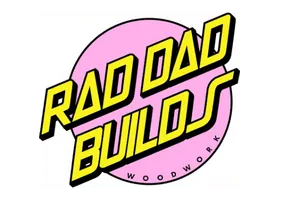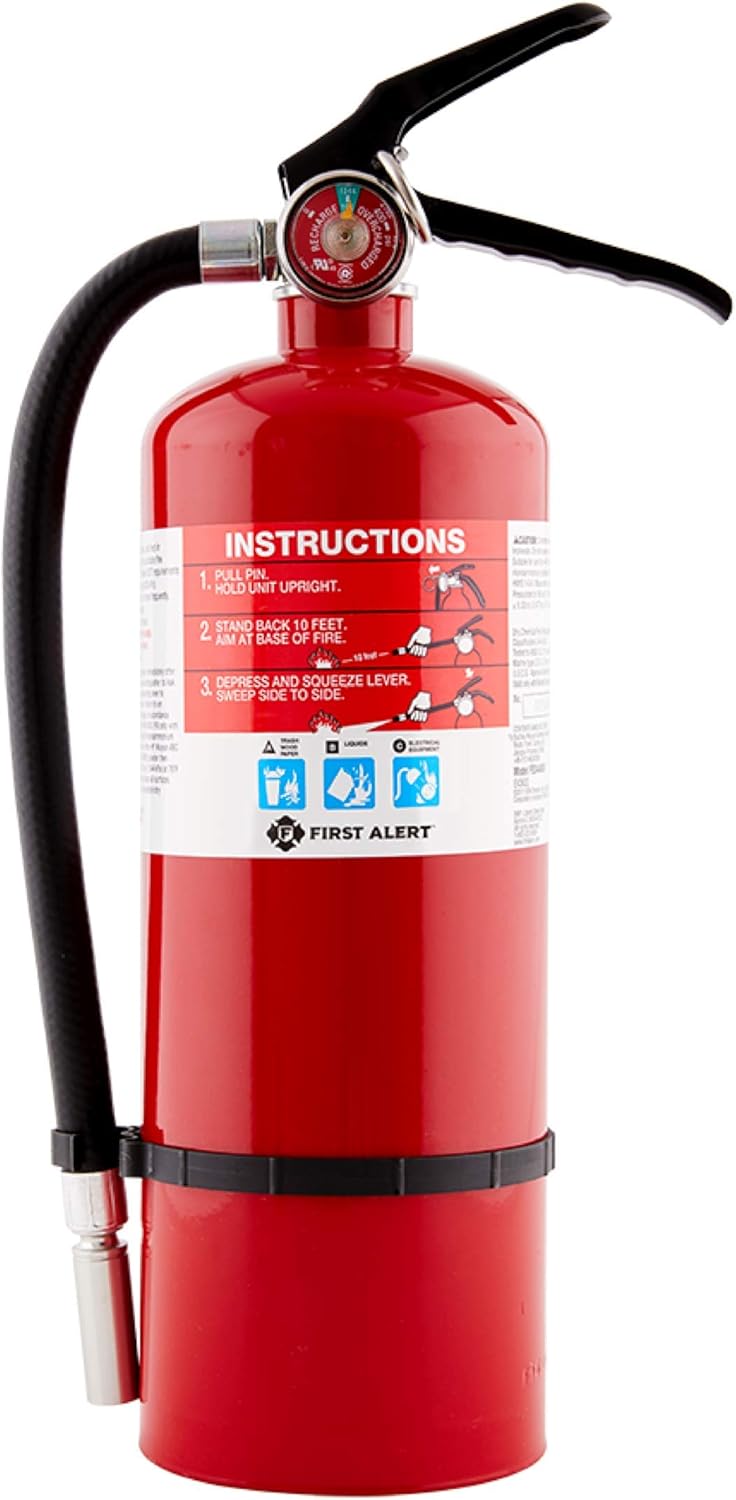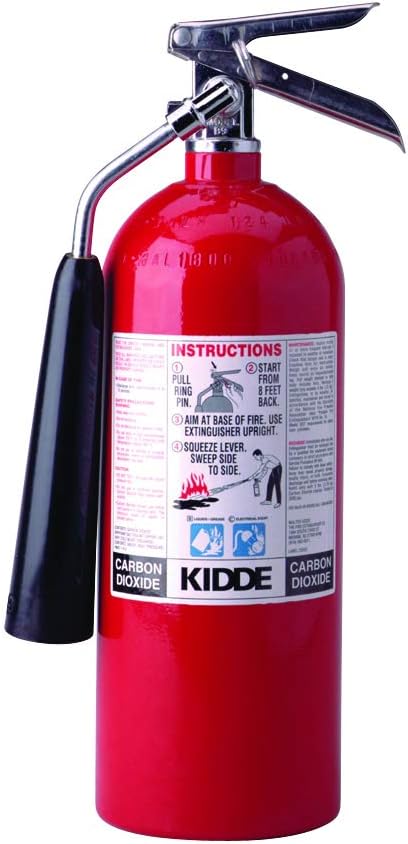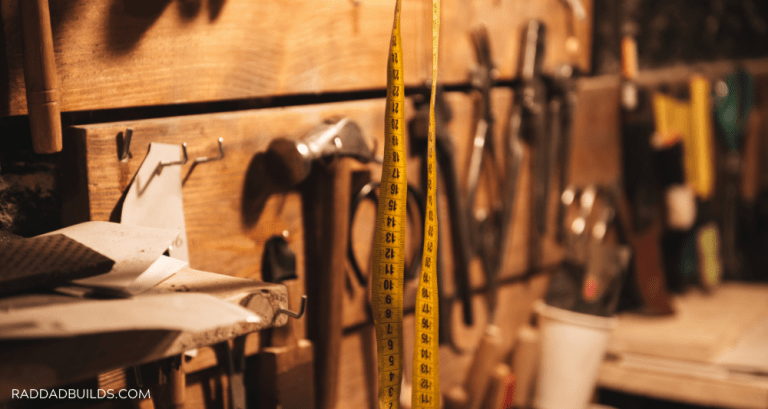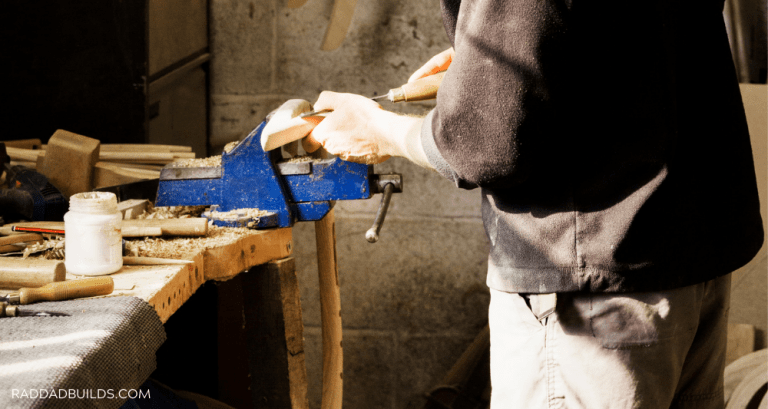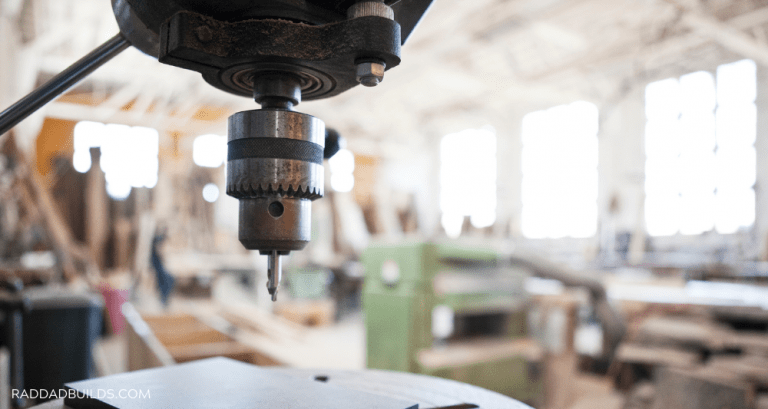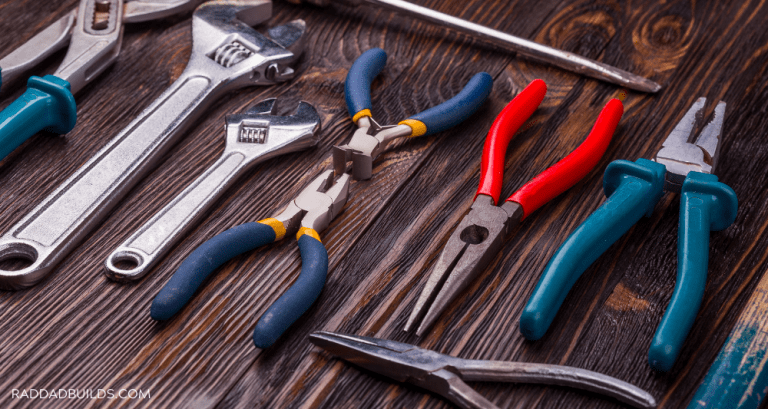Best Fire Extinguisher for your garage or workshop (2021)
Did you know in some cases it is legally required that for every 200 sq. ft. of indoor area, there should be at least one fire extinguisher present? It’s not just about following the law, but also about public and home safety. Getting a fire extinguisher for your home, workplace, and even your car is a safety precaution. Stop fires in their track and survive to see another day by using the best fire extinguisher on the market.
[lwptoc]Top 5 Fire Extinguishers – Best Choices for 2021
Table of Contents
We’ve taken the time to write this list of reviews for the best fire extinguisher, to help make your buying choice much easier. There’s also a detailed buyer’s guide at the bottom section of this article for those of you that would like to dive more in-depth into this area of investigation.
#1. First Alert 1038789 Fire Extinguisher (1A 10-B:C)
This site uses ads and affiliate content, earning commission on qualifying sales. Disclosure.
Weighing in with 3 pounds of extinguishing agent and a small built (length of 14.3 inches), this fire extinguisher is easy to lift and use in an emergency. It is a dry powder type fire extinguisher that can be used for all fires (Class A, B, and C).
This fire extinguisher has a metal pull pin as a trigger with a safety seal to avoid tampering or accidental discharge. It even has corrosion-resistant and waterproof labeling so anyone can understand the easy instructions and use them in an emergency. This is perfect to have in a household or office as extra security against small fires. It has an average discharge time of 8 seconds.
Pros
• Rechargeable
• Strong metal valve
• Easy to handle
• Can be used for most fires
Cons
• Not environment friendly
• Difficult to clean up after use
• Limited discharge
#2. Kidde FA110 Fire Extinguisher (1A 10-B:C)
Just like all other ABC fire extinguishers, this one too provides a multi-purpose functionality of being able to fight all classes of fire.
Despite having an overall metal construction, it is still lightweight and easy to use. It has an easy to read gauge and easy to pull safety pin so anyone may be able to use the extinguisher in a time of emergency. Just to make sure that even people with arthritis or weakness of the fingers can use this product, they have designed the body of the extinguisher with a sure-grip plastic handle and lever.
While it may be easy to use and handle, it provides only 2.5 pounds of extinguishing agents. This means there is a very limited discharge when it is finally put to the test. But one thing is for sure the bottle is packaged to have a large shelf life, and the agent will not diffuse out for up to six years. It has an average discharge time of 8 seconds.
Pros
• Easy to use
• Can be used for most fires
• Large shelf-life
Cons
• Limited discharge
• Difficult to clean up after use
• The plastic handle may break off
#3. Amerex B500 Fire Extinguisher (3A 40-B:C)
With 5 pounds of extinguishing agent, this is yet another great ABC extinguisher to buy.
It’s relatively more expensive compared to the other home extinguishers available on the market, but it gives a 14 second discharge time to make sure to get all the flame under control.
It has an all-metal body, and even the handle is durable for crises. In terms of quantity, this has a large amount of extinguishing agent, which is more than enough for even the larger household fires.
Pros
• Rechargeable
• 14 seconds of discharge time
• Can put out all fires
Cons
• Expensive
• Difficult to clean up after use
#4. First Alert Tundra Fire Extinguishing Aerosol Spray
A new take on fire extinguishers, this is unlike all traditional safety measures. It is an aerosol spray that is easy to use with its spray nozzle (like most insect killers or deodorants).
This aerosol extinguisher was created with the idea in mind to stop a small household fire in its tracks before becoming a large structural fire. It is a safety product that is easy to handle in an emergency without compromising on accuracy. Its biggest quality is that it is portable so you can carry it with you wherever but that also means it packs less of a punch compared to its traditional counterparts.
It has a unique formula that can be used on all classes of fire (A, B, and C). The formula is also biodegradable and non-toxic; after use, any surfaces that may have been exposed just need to be wiped down by a wet cloth. Since the formula is biodegradable, it also has a short expiration date.
Pros
• 32 seconds of discharge time
• Cheap
• Easy to handle
• Environment friendly
• Portable
Cons
• Low shelf-life
• For small fires only
• Cannot be recharged
#5. Kidde 466180 Pro 5 Fire Extinguisher (5-B:C)
The Kidde Pro 5 is environmentally safe as it uses carbon dioxide as an extinguishing agent to put out the fires, which means after use, it will not have contaminated any materials or valuables in the vicinity.
This fire extinguisher can be used for Class C and Class B fires. It can be recharged by professionals, and the contents do not discharge on its own, meaning that one fire extinguisher is good for five years if you don’t have to use it.
The Kidde Pro 5 Fire Extinguisher is made using long-lasting metal parts such as nickel-chrome-plated brass for the valve with a stainless steel handle and lever.
Pros
• Rechargeable
• Environmental friendly
• Easy cleanup after use
• Sturdy Build
Cons
• Can’t be used to combat Class A fires
Buyer’s Guide for Fire Extinguishers
We may not realize how constantly we’re exposed to some kind of fire hazard, from our kitchen use to candles and even our electrical appliances. For situations like these, it is a burning need to have fire extinguishers in each area of the house, the garage, and even the parking.
However, a fire extinguisher cannot be bought without complete research because many forms, features, and grades make each fire extinguisher unique in itself, and each unit targets a specific need. So before even beginning your search, it’s important to analyze your needs and then target the features that would specifically help you accomplish them.
Classes of Fire
When it comes to buying fire extinguishers, just the features of the extinguisher are not enough, but it’s also important to judge what kind of fires you’ll be combating with your extinguisher. Keep in mind that there is no one type of extinguisher that can work on all classes of fires.
Class A fires
These fires are those that involve materials that can be extinguished with water. Common household examples are paper, wood, and cloth.
Class B fires
Class B fires are those that involve flammable liquids, such as cooking grease or paint solvents.
Class C fires
These fires involve electrical equipment, often things like a television, a fuse box, or stereo are found to be center-stage.
Types of Fire Extinguishers
Water Extinguishers
These are the most common fire extinguisher type and are used to remove class A fires. The water has a cooling effect on the fuel, causing it to burn more slowly until the flames are eventually extinguished.
Foam Extinguishers
These fire extinguishers are ideally for class B fires, but because they are water-based, they can also be used on class A fires making them dual-functional. For class, A fires, the foam acts to cool down the fuel just as the water extinguishers did but for class B fires the foam forms a barricade between the flame and the burning liquids (e.g., oil/grease) to prevent further burning and hence eventually causing the fire to go out.
Dry Powder Extinguishers
Dry Powder extinguishers are the most recommended type of fire extinguishers because they are also known as ABC extinguishers meaning they are effective on most A, B, and C class fires. While these may seem like the ideal solution, they work by releasing dry powder, which smothers the fire by cutting off the fuel and flame from the source of oxygen. This also means that if used in a closed environment, the dry powder can be inhaled and lead to suffocation. The residue from this type of fire extinguisher is also very hard to clean up after use.
Carbon Dioxide Extinguishers
This type of fire extinguishers is predominantly used for electrical fires (i.e., class C fires), but again they can be dually used for class B fires as well. CO2 extinguishers smother out the fires by removing the oxygen source, which is feeding the flame so it can no longer burn. These are usually used in computer server rooms.
Wet Chemical Extinguishers
Again these fire extinguishers are also dual-functional as they combat both class B and class A fires. However, they are ideally meant to be used for fires caused by cooking oil and fats.
Wet chemical extinguishers work by spraying a foaming substance that cuts off the flame from its oxygen source causing it to ultimately die down. This spray also reduces the feeling of heat from the atmosphere. These are usually recommended for commercial kitchens and canteens.
Types of Nozzles
The best fire extinguisher is not only assessed by its contents but also by its accessories. As such, a nozzle can play a crucial role in how well a fire extinguisher will do its job.
Jet Nozzle
This type of nozzle ejects at high speed, and it is ideal for controlling the direction of fluid flow.
Spray Nozzle
Fire extinguishers that are equipped with a spray nozzle can cover a greater surface area, which means that the fire will be put out more rapidly.
Mist Nozzle
A mist nozzle is very interesting because it releases the contents of the extinguisher in the form of microscopic particles. These particles not only suffocate the fire but also create a sort of defensive wall between the fire and the person using extinguisher so to reduce the feeling of heat.
Overall Build Quality
When it comes to buying safety equipment, you have to look at everything while keeping an emergency situation in mind. This is when a lot of factors come into play. Some important things to note are the materials used to manufacture the parts.
The construction of the safety pin, valve, and trigger are all crucial. Under no circumstances is it advisable to trust your life to an inferiorly built product. Often fire extinguishers are built with plastic parts instead of metal, the plastic parts may fall apart in a time of need, and the extinguisher will fail to go off.
It is also important for the best fire extinguisher to be easy to use. The gauge should be readable at a glance, and the instructions should be boldly written on the body. While the safety of the extinguisher should be strong and keep the agent from diffusing out, it shouldn’t be difficult to remove in a crisis situation.
An ideal fire extinguisher would have a large discharge time that would allow the person using the extinguisher a maximum amount of time to fight off the fire.
The extinguisher should also cover a great amount of area as it is released, so more of the fire can be put out with a single discharge.
Conclusion
Experts recommend that homeowners and the average office should be using a multi-purpose unit like 3A:40-B:C for an ideal safety plan, so keeping that in mind our choice for the best fire extinguisher is the Amerex B500 Fire Extinguisher.
While it may be more expensive than others, there should be no compromise for safety, and it will certainly give you the most bang for your buck. Where most fire extinguishers contain less than 3 pounds of agent, this has a whole 5 pounds, which is what you want in a crisis situation, especially when it can combat all classes of fire.
But if you are looking for a cheaper option, the First Alert 1038789 may be the best fire extinguisher for you. It has all the properties of the Amerex B500 at a lower cost point, of course, the amount of agent has decreased as well, but it will still hold up its own in an emergency.
